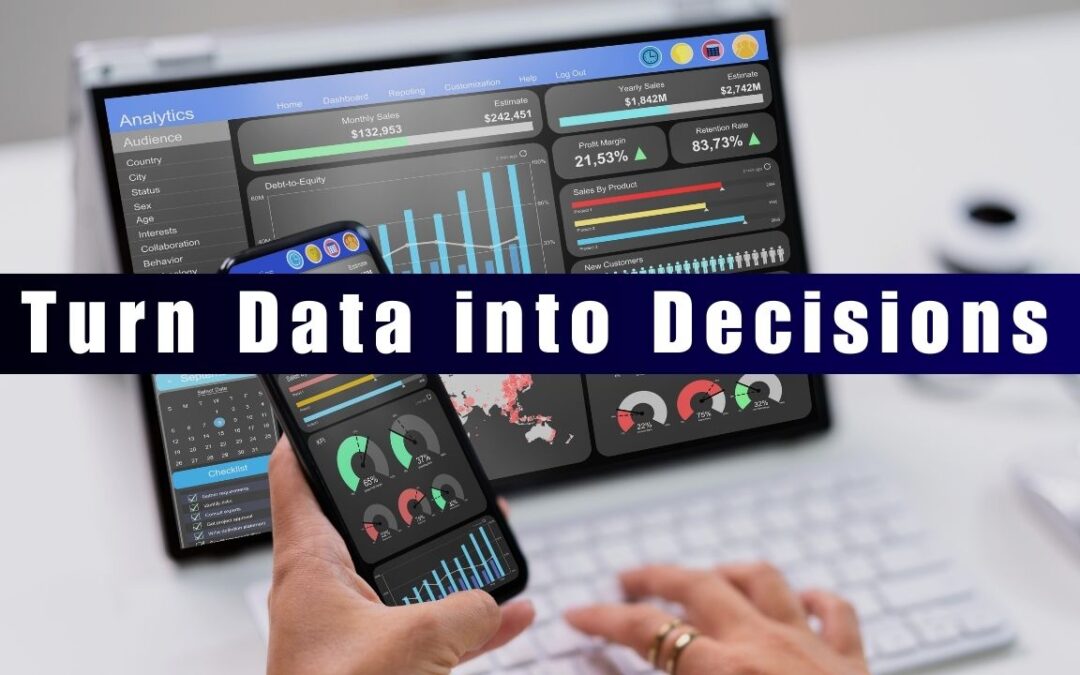The success of any business hinges on the ability to make smart decisions, adapt to change, and deliver value to customers. While instinct and experience have traditionally played key roles in guiding business strategies, the modern world requires something more precise and reliable: data-driven insights. These insights, born from the careful collection and analysis of data, have the power to transform businesses by uncovering hidden opportunities, refining operations, and creating meaningful connections with customers.
By fully embracing a data-driven approach, companies can navigate challenges, outpace competitors, and achieve sustained growth. But what exactly are data-driven insights, and how can they be leveraged effectively? This comprehensive guide will explore the concept, its benefits, and actionable strategies to implement data-driven decision-making in your organization.
Understanding Data-Driven Insights

At its core, data-driven insights refer to actionable conclusions derived from analyzing data. This data might come in various forms, such as sales figures, customer feedback, or market research reports. When analyzed correctly, it reveals patterns, trends, and connections that guide informed decision-making.
For example, a retail business might notice through data analysis that sales of a particular product spike during specific months. Acting on this insight, they can prepare better inventory levels and targeted marketing campaigns to capitalize on the trend.
Unlike raw data, which is unorganized and often lacks context, insights offer clarity and direction. They help businesses not only understand what is happening but also why it is happening and what can be done to achieve desired outcomes.
The Key Elements: Data, Analytics, and Insights

To fully appreciate the power of data-driven insights, it’s essential to distinguish between three closely related concepts:
1. Data
Data is the foundation of insights. It consists of raw facts and figures collected from various sources, such as website traffic logs, customer reviews, or financial reports. However, raw data alone is not enough—it’s often overwhelming and lacks meaning until it is organized and processed.
2. Analytics
Analytics is the process of examining data to identify patterns, trends, and correlations. This step transforms raw data into structured information. Analytics can be descriptive (what happened), diagnostic (why it happened), predictive (what will happen), or prescriptive (what should be done).
3. Insights
Insights are the actionable conclusions derived from analytics. These provide clarity and understanding, enabling businesses to take informed actions. For instance, analytics might reveal that customer churn is high among a certain demographic. The insight might suggest enhancing customer support for that group or improving the product to better meet their needs.
The Transformative Benefits of Data-Driven Insights

The impact of data-driven insights extends across every facet of a business. Below, we explore some of the most significant benefits.
1. Eliminating Guesswork in Decision-Making
Making decisions based on intuition alone can lead to missed opportunities or costly mistakes. Data-driven insights provide a factual basis for decisions, allowing businesses to act with confidence.
For example, a food delivery company might analyze customer order patterns and discover that late-night orders are particularly popular in certain areas. With this knowledge, they can adjust delivery hours and staffing to maximize profits.


2. Streamlining Operations
Inefficiencies and bottlenecks in business operations can drain resources and hinder growth. Data insights can pinpoint these problem areas, helping organizations make improvements.
Imagine a manufacturing company noticing through data analysis that machinery downtime peaks during a specific shift. By investigating further, they might identify training gaps among employees or maintenance schedules that need adjustment.
3. Personalizing Customer Experiences
Understanding customers on a granular level is one of the most powerful applications of data-driven insights. These insights can reveal individual preferences, enabling businesses to tailor products, services, and communication.
For instance, an e-commerce platform could use browsing history and past purchases to recommend products customers are likely to love. This not only improves the customer experience but also boosts sales and fosters loyalty.


4. Gaining a Competitive Edge
In highly competitive industries, staying ahead requires a deep understanding of market trends and customer needs. Data-driven insights can give businesses the edge they need to outpace competitors.
A business analyzing industry trends might spot an emerging demand for eco-friendly products. By acting quickly to introduce sustainable options, they can position themselves as leaders in the field.
5. Boosting Financial Performance
Data insights can help businesses identify new revenue streams, optimize pricing strategies, and improve customer retention—all of which contribute to financial growth.
For example, a subscription-based service might use data to identify features that increase user engagement. Highlighting these features in marketing materials or onboarding processes can boost subscriptions and reduce churn.


6. Enhancing Security and Managing Risks
In today’s digital age, protecting sensitive data and managing risks are paramount. Data insights can play a crucial role in enhancing security by identifying vulnerabilities and ensuring compliance with regulations.
By using anonymized and aggregated data, businesses can minimize the risk of breaches while still benefiting from valuable insights.
How to Gather and Implement Data-Driven Insights

Making the shift to a data-driven approach requires a systematic process. Below are nine essential steps to help businesses effectively gather and implement data-driven insights:
1. Define Your Objectives
Begin by identifying what you want to achieve. Whether it’s increasing sales, improving customer retention, or optimizing supply chains, having a clear goal will focus your efforts.
2. Collect Relevant Data
Gather data from various sources, such as customer surveys, website analytics, and sales records. Ensure the data is accurate, reliable, and relevant to your objectives.
3. Organize and Clean the Data
Raw data is often messy and inconsistent. Cleaning and organizing it ensures accuracy and makes it easier to analyze. This may involve removing duplicates, filling gaps, or standardizing formats.
4. Analyze the Data
Use analytical tools and software to process the data. Look for patterns, trends, and correlations that provide insights into your business challenges or opportunities.
5. Share Insights Across Teams
Insights are only valuable if they are shared effectively. Use dashboards, charts, and reports to communicate findings with stakeholders and team members.
6. Develop an Actionable Plan
Based on the insights you’ve gathered, create a specific, measurable, achievable, relevant, and time-bound (SMART) plan to achieve your objectives.
7. Implement and Monitor Progress
Put your plan into action and track its performance using key performance indicators (KPIs). Regular monitoring allows you to identify areas for improvement.
8. Solicit Feedback and Refine Strategies
Collect feedback from customers and employees to refine your approach. Data-driven strategies should be dynamic, evolving with new information.
9. Foster a Data-Driven Culture
Encourage a mindset of curiosity and accountability within your organization. Provide training and tools that empower employees to use data in their decision-making processes.
Real-World Applications of Data-Driven Insights

Optimizing Marketing Campaigns
Marketing teams can use data insights to identify the channels and messages that resonate most with their target audience. This allows them to allocate resources effectively and improve return on investment.
Improving Inventory Management
Retailers can analyze sales trends to predict demand, reduce excess inventory, and avoid stockouts. This leads to lower costs and higher customer satisfaction.
Enhancing Patient Care
Healthcare providers can use data insights to identify at-risk patients and offer proactive care, improving outcomes and reducing costs.
Innovating Products and Services
Data insights can reveal gaps in the market or unmet customer needs, guiding the development of new products and features that delight customers.
The Role of AI in Data-Driven Insights

Artificial intelligence (AI) is revolutionizing the way businesses analyze and use data. AI-powered tools can process vast amounts of information quickly, identifying trends and patterns that might be missed by human analysts.
For instance, AI can analyze customer feedback to uncover common complaints or preferences, enabling businesses to make improvements swiftly. Additionally, AI enhances data security by detecting anomalies and preventing breaches.
Conclusion
Data-driven insights are more than just a buzzword—they are a strategic necessity for businesses seeking sustainable growth. By leveraging the power of data, companies can make informed decisions, improve operations, and create personalized customer experiences that drive loyalty.
As technology continues to evolve, the potential of data-driven insights will only grow. Organizations that embrace this approach today will be well-positioned to thrive in the future.

